The Children's Crusade set out for the Holy Land in 1212. It never arrived.
Two bands of young European Christians had their eyes on Jerusalem but failed to reach it. Historians are still seeking their full story.

The Crusades stand as one of the key historical milestones of the Middle Ages. Backed by the Catholic Church, European Christians launched eight separate missions to take the Holy Land from Muslim control between 1096 and 1291. Led by Europe’s elite, the Crusades were documented in great detail by the leaders of the church as well as the people who fought them. Their leaders, their movements, and their outcomes are well known to history.
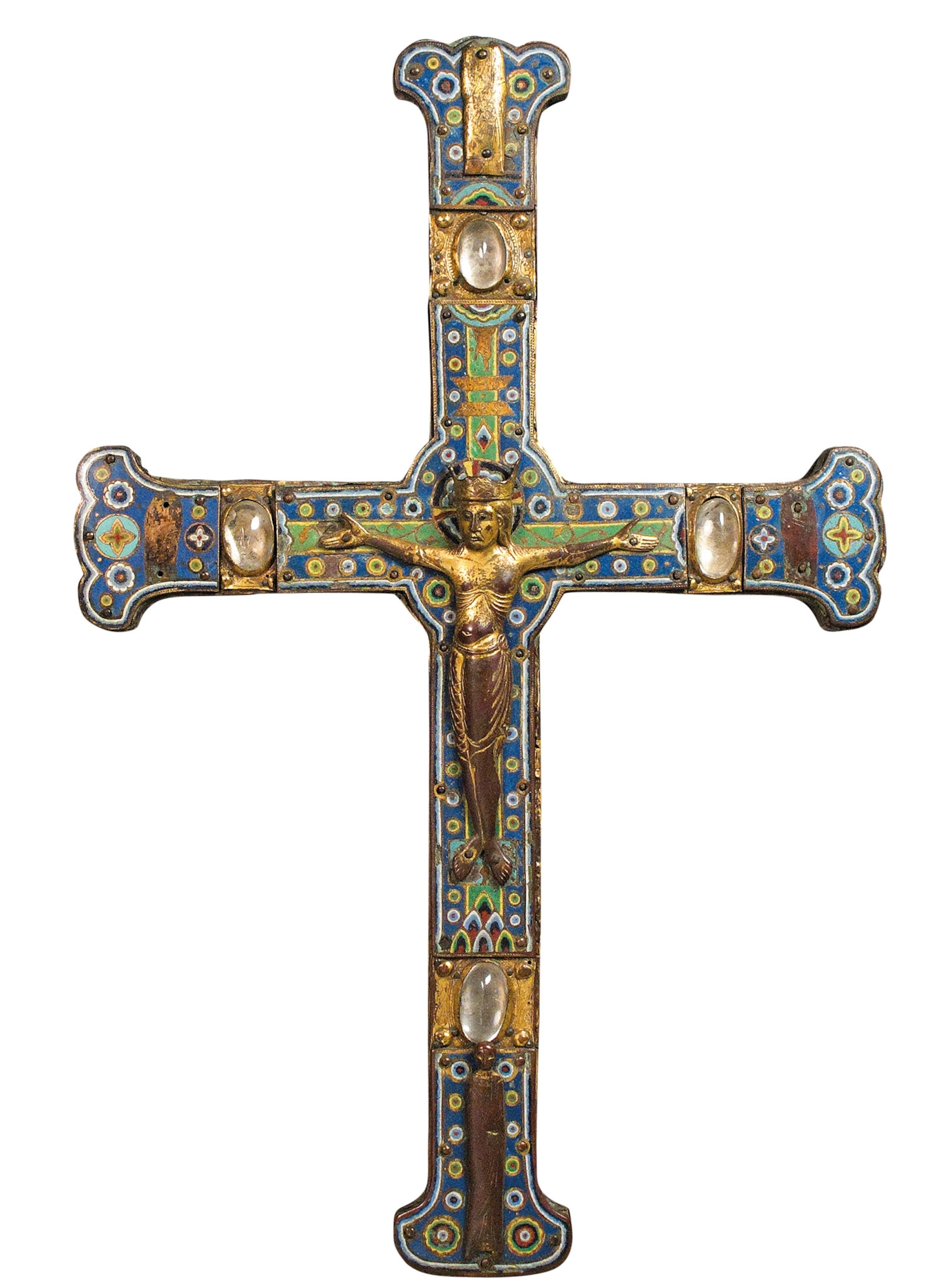
The story of the Children’s Crusade of 1212 brings to mind powerful images of throngs of medieval European children gathering together in faith to wrest Jerusalem from the Muslims. The events of the two expeditions fascinated 13th-century audiences, and chroniclers wrote different accounts decades after the Children’s Crusade ended. Historians, however, are hampered by a lack of detailed, primary sources about these popular movements of the early 13th century. Most consider that the events recorded by later chroniclers may be legendary or exaggerated.
The Children’s Crusade was not an official crusade—which had to be sanctioned by a pope—nor does there exist solid evidence that it was supported predominantly by young children. Nevertheless, it was a mass movement, inspired by the desire to defend and spread Christianity in the early 1200s.
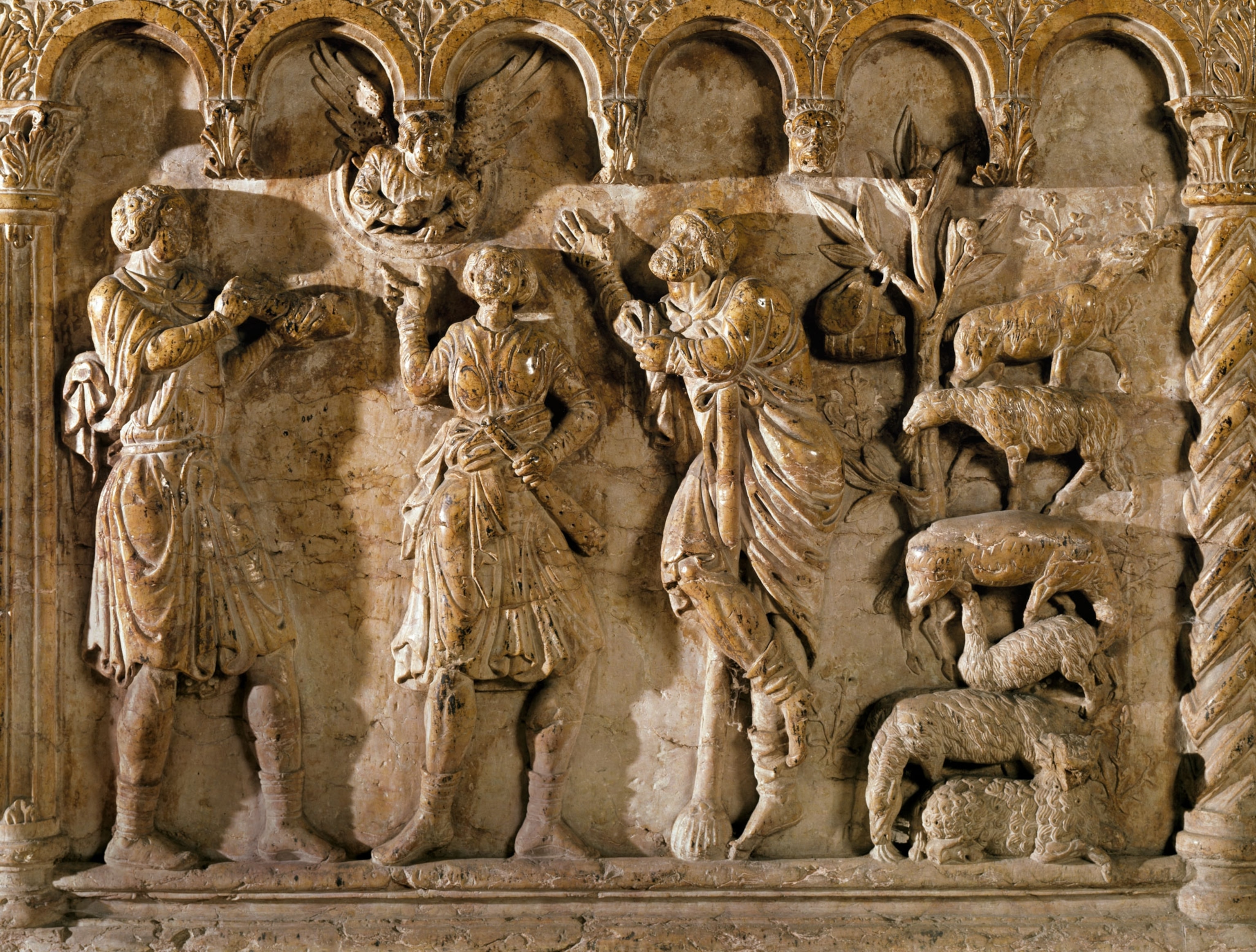
The age of crusades
Official papal crusades began in the 11th century. Islam had spread far and wide to formerly Christian lands in the Near East and North Africa in the seventh century, and to the Iberian Peninsula in the eighth. By the late 11th century, Europe was enjoying a period of economic strength, and the papacy had asserted its power following a series of important reforms. Buoyed by a resurgence in pilgrimage across Europe, the Catholic Church wanted to expand. The blessing of Pope Urban II in 1095 launched the First Crusade, a bid to retake the Holy Land, the following summer. (The Knights Templar got their start—and lots of money—during the Crusades.)
The Christian alliance took Jerusalem from the Fatimid Muslims in 1099 and established the Kingdom of Jerusalem. Over the next two centuries, seven crusades followed in an attempt to retain control in the Holy Land. Muslim retaliation would prove too strong, however, and the last European crusader stronghold would fall to the Mamluks in 1291. The most well known Crusades were these large expeditions to the Holy Land, but there were other military missions in Europe that roused the faithful. In the early 1200s, Pope Innocent III proclaimed two “local” European crusades: One was the struggle against Almohad Muslim rulers in Spain; the other was the campaign to destroy Catharism, a Christian heresy popular in southern France. Both these local and distant holy wars stirred up religious fervor among commoners in Europe, in turn sparking a series of “popular” crusades.
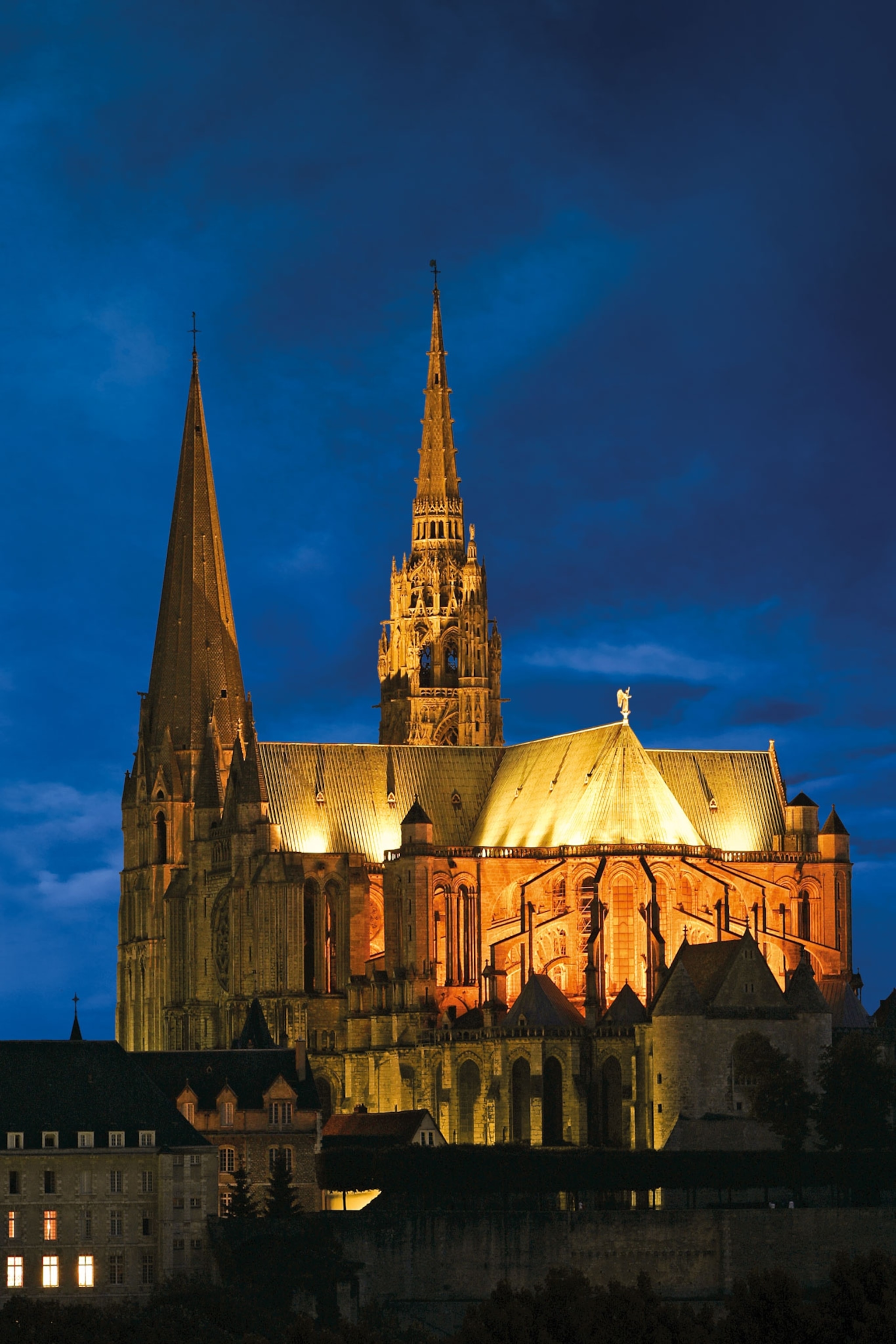
The mysterious pueri
The Children’s Crusade began in spring 1212 as the church sought recruits to fight Muslim Spain and the Cathars. But a new group of people willing to fight for God started to emerge, volunteers who were neither mercenaries or warriors. Thirteenth-century chroniclers called them pueri. (Meet the mysterious enemies of the crusaders: the Alamut, or "Assassins.")
Pueri is a Latin term that can mean children generally or boys specifically. The appearance of this word in the sources led to the popular name of the Children’s Crusade, but historians are unsure that all the participants were literal children. Existing sources have scant details, so it is not possible to establish the exact ages of all the pueri. While the youthfulness of many of those who took part was noted by chroniclers, some historians have recently suggested that “pueri” could have been a social designation for poor, landless peasants and that their movement may have been notable for the large number of poor, peasant youths.
Questions of age

It has been argued that the so-called Children’s Crusade was not strictly made up of children. In 1977 the Dutch historian Peter Raedts argued that the Latin term pueri referred not only to those who were children, but also to those who were socially “small.” In other words, pueri could be peasants, like Stephen and Nicholas, who belonged to the lowest echelon of society. Several sources specifically mention that adult men and women, as well as the elderly, did take part in the events of 1212. The term pueri could have been used to re- fer to male adolescents under 15 years old, which was then the legal age to marry. This definition adds teenagers to the mix. However, the word infantes also appears in the sources describing participants in the crusade: This term does refer unequivocally to children.
The Children’s Crusade had two principal leaders: Stephen, from Cloyes (a hamlet on the Loire River in central France), and Nicholas of Cologne in Germany. A shepherd, Stephen was perhaps as young as 12 in 1212 when he rose to lead a popular religious movement. (Two centuries later Joan of Arc would also guide France as a teenager.)
The Chronicon universale anonymi Laudunensi was written by an unnamed monk from Laon in northern France, and is one of the sources historians look to when studying the Children’s Crusade. The text describes Stephen: “In the month of June [1212], a certain puer named Stephen, a shepherd by profession, from a village called Cloyes . . . used to claim that the Lord appeared to him in the guise of a poor pilgrim and accepted bread from him and entrusted to him letters to be carried to the king of the Franks.”
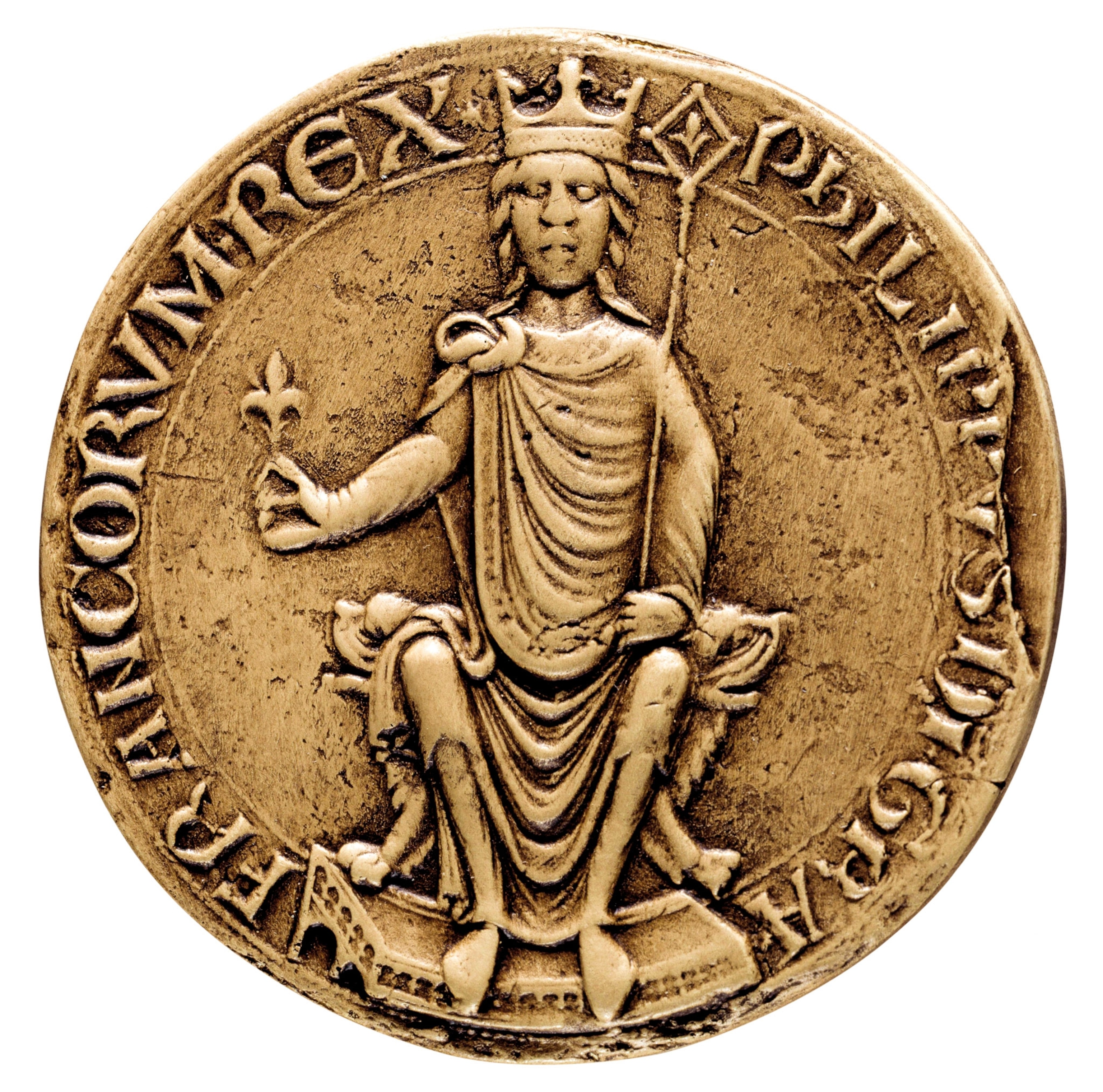
Since Cloyes is in the diocese of Chartres, Stephen may have been to that cathedral city when Pope Innocent III visited to build support for the larger crusading efforts. Stephen began attracting followers to his self-proclaimed crusade. Laon’s chronicle recounts that Stephen and a large band of pueri set out for Paris to seek an audience with the French sovereign, Philip II, to deliver the holy letters. The king lived in the Benedictine abbey of Saint-Denis, just to the north of the city.
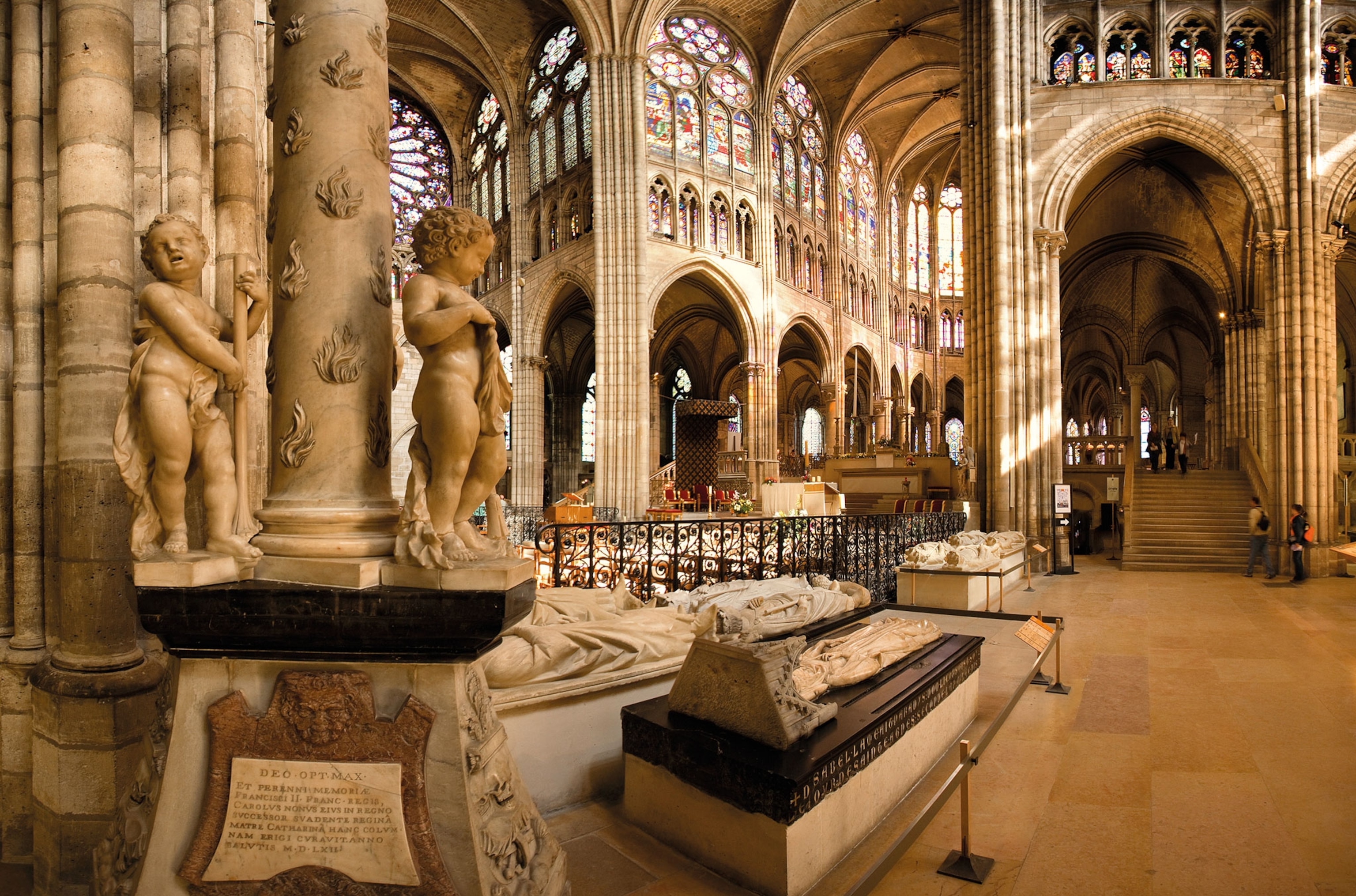
The arrival of the shepherd boy and his followers in Paris coincided with the annual Lendit fair, attended by merchants from all over Europe. At this time of year, Paris saw a great influx of pilgrims to the abbey of Saint Denis. Among them was Stephen: “Together with shepherds of a similar age, nearly 30,000 people flocked to him from various parts of France.”
The Laon chronicler noted that “the holy boy Stephen” appeared as their “master and leader.” According to another source, the 13th-century Barnwell Chronicle, written in England, the children had their sights set higher than holy war with Muslim Spain or the Cathars: “They said they needed to go [to the Holy Land] and recover the True Cross. ”This desire was prompted by a traumatic event that had taken place two decades previously, in 1187, when the crusaders lost the relic of the True Cross at the Battle of Hattin. Later that year, forces of the Ayyubid sultan, Saladin, took Jerusalem."
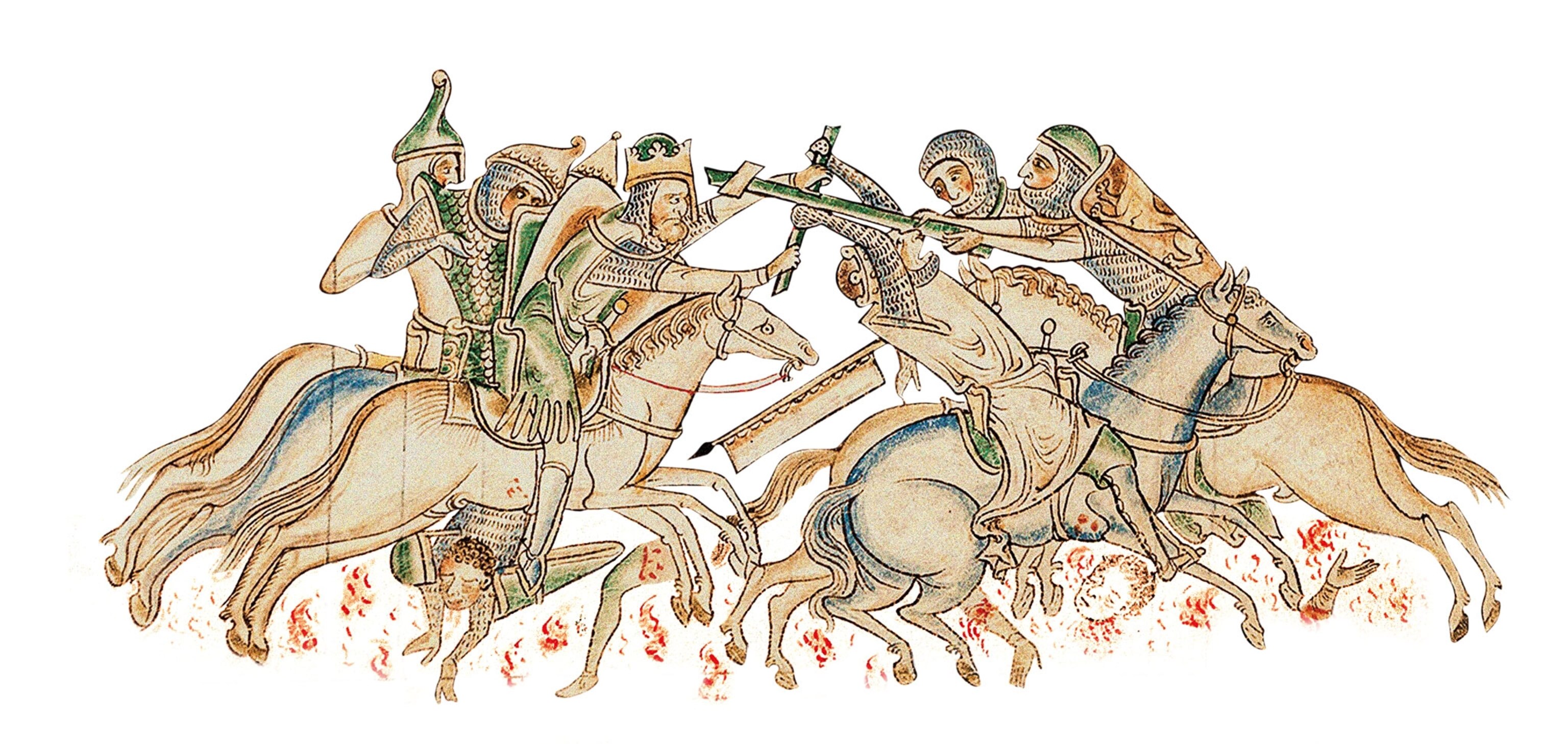
Philip II did not lend his support to Stephen or his followers. It is not clear from the sources whether he read the mysterious “letters” Stephen received, or indeed exactly what these letters said. However, the chronicler of Laon records that the king took the movement seriously enough to consult a learned group of churchmen known as the Paris Masters. His actions suggest the king was fearful of the likelihood that the presence of large numbers of poor, young people might lead to civil unrest. (This queen helped lead a royal crusade to the Holy Land.)
The Laon scribe wrote that, on their advice, the king commanded Stephen’s followers to return to their homes. Stephen’s crusade ended as quickly as it began. The Laon chronicle was written very soon after the events recounted, so many historians regard as credible his claim that, following the royal order, Stephen’s authority crumbled.
Interest in Stephen and his followers later aroused more speculative accounts. These include authors such as Matthew Paris, an English Benedictine monk writing more than 20 years after the event. Matthew attributes Stephen’s charisma to a dangerous, Satanic magic. Another chronicler, the Cistercian monk Alberic de Trois-Fontaines, extends Stephen’s story to a tragic end in which Stephen leads his followers to the Mediterranean port of Marseille. There they are tricked by two merchants, who give them free passage aboard their seven ships. Two ships sink, and the five remaining take the children to Bugia (modern-day Bejaïa, Algeria) and Alexandria, Egypt. The merchants sell the children to Muslim slavers, who then try to force them to renounce their Christianity. They remain faithful, and 18, according to Alberic, are tortured to death. One of the pueri escapes and returns to Europe to give this testimony.
Gregory's innocents

Alberic de Trois-Fontainnes, a 13th-century French monk, wrote a lengthy chronicle between 1227 and 1241 that featured an entry on the Children’s Crusade, but historians doubt its accuracy. He details the attempts of the pueri to secure passage to Jerusalem when 30,000 of them reach Marseille. Swindled by slavers, many perished when their ships sank near Sardinia. According to Alberic, Pope Gregory IX was so moved by the event that he ordered a new church, called the Church of the New Innocents, to be erected on San Pietro (an island some four miles southwest of Sardinia), where the drowned children washed ashore. Alberic reported that their perfectly preserved bodies were carried into a local church where they remained and were visited by pilgrims. Historians have searched for remnants of this church, both in ecclesiastical documents as well as archaeological sites. Solid confirmation of its existence has yet to be confirmed.
Most historians consider Alberic’s writings questionable. Alberic includes many of the same details as the Laon chronicler, but the events in Marseille and North Africa are not supported by any other sources of the era, placing his account more in the realm of hearsay.
Nicholas’s miracle
In parallel with Stephen’s doomed crusade, another venture was taking shape in Germany, under the leadership of another charismatic youth, Nicholas of Cologne. There is some confusion in the sources as to whether Stephen’s crusade influenced Nicholas, or if both movements arose spontaneously.
It is clear, however, that Nicholas, like Stephen, believed he had received orders from God to travel to Jerusalem to recover the Holy Land. His followers reportedly numbered in the thousands and included men and women, as well as the youth. They gathered in Cologne between Easter and Pentecost in 1212. Sources recorded that Nicholas and his followers carried T-shaped tau crosses, later associated with the Franciscan monastic order associated with poverty and humility. The tau emblem would also become associated with Nicholas. (Archaeological excavations under Jerusalem are stoking long-standing tensions.)

The remoteness of Jerusalem did not deter Nicholas. He claimed that upon reaching the shore, the sea would part for him as it had for Moses when he led the Hebrews out of Egypt. Contemporary written sources tracked the progress of Nicholas’s pueri as they moved toward the Mediterranean. On July 25, 1212, their presence was registered in the city of Speyer in southwestern Germany. From Speyer, the pueri marched south and crossed the Alps, an unimaginably difficult and dangerous route.
Weakened by hunger, exposure, and fatigue, those who did not choose to return home or who did not die along the way arrived at Piacenza in northern Italy on August 20, 2012. They had walked over 400 miles in a month. From Piacenza several thousand traveled almost 100 miles more to the port city of Genoa in Italy.
Despite their prayers, the sea did not part, and the multitude disbanded. Nicholas’s leadership seems to have ended, and his ultimate fate remains undetermined. Tales abound that some pueri went by ship to Marseille, while others ended up in Rome. The ones who stayed in Genoa probably found work as a source of cheap labor. Only lasting a few short months, Nicholas’s crusade was recorded as a failure, begun with earnest passion and faith and ending with exhaustion and disappointment.
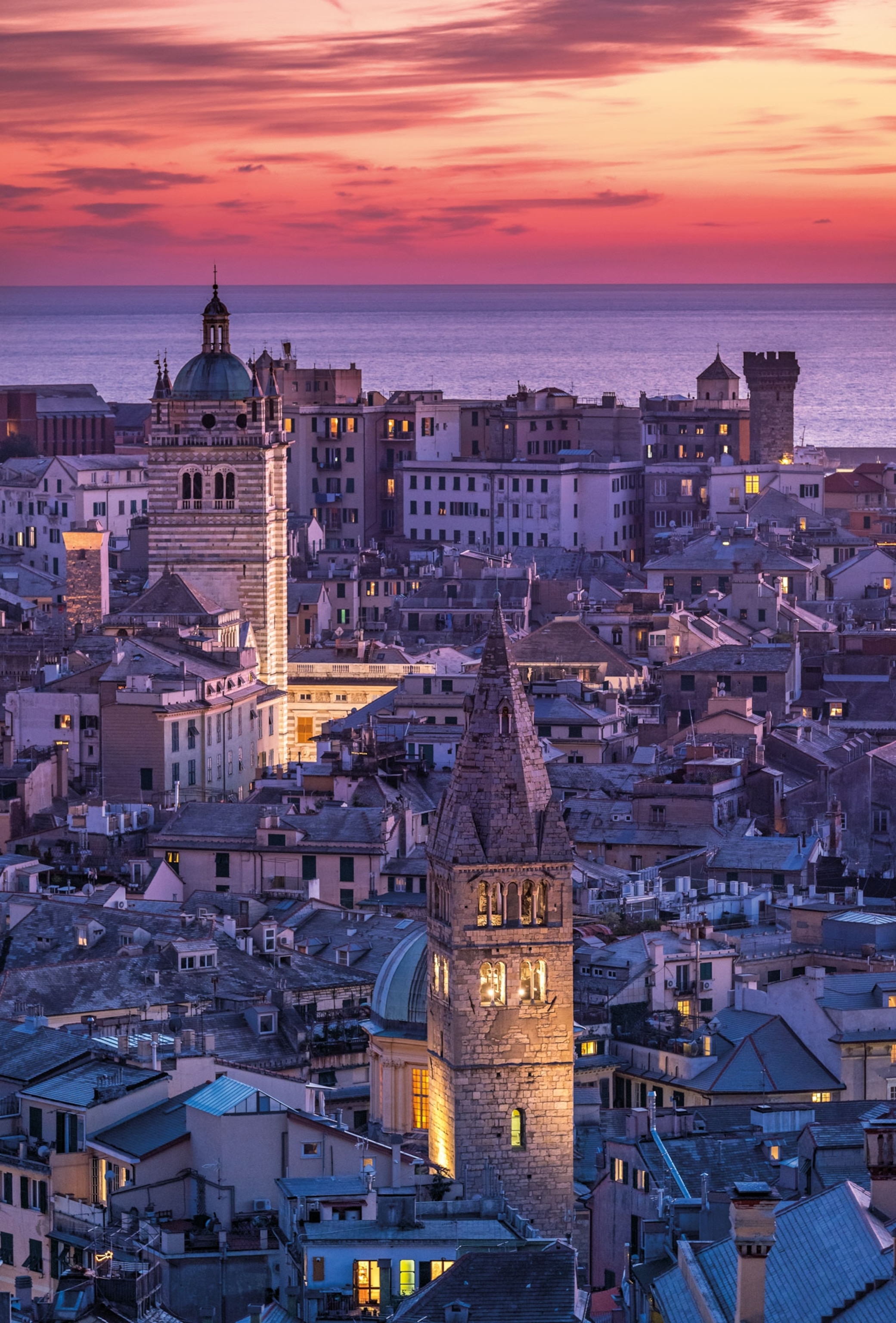
Despite not reaching the Holy Land, the Children’s Crusade made an indelible mark on 13th-century culture. More than 50 chroniclers recorded it; some penned a few terse lines, while others devoted pages. Because the crusade was not sanctioned by the pope, it is remarkable that both Stephen’s and Nicholas’s movements attracted attention that lasted for decades. One account from an Augustinian monastery in Alsace, written in 1230, describes Nicholas’s 1212 venture as “a certain vain expedition, which came to pass when pueri and foolish persons snatched up the sign of the cross, without any discernment, motivated more by curiosity than concern for their salvation.”
Whether the pueri were children, or peasants, or a mixture of the two, the hostility of some chronicles toward them reflects the fear that piety carried too far by the young or by the poor would lead to a breakdown in authority. Such fears later came to pass in the form of the Shepherds’ Crusade of 1251. Led by an elderly Hungarian, it was linked at the time to the Children’s Crusade when the chronicler Matthew Paris claimed the leader was the now grizzled Stephen of 1212 (almost certainly untrue).
Romantic legends
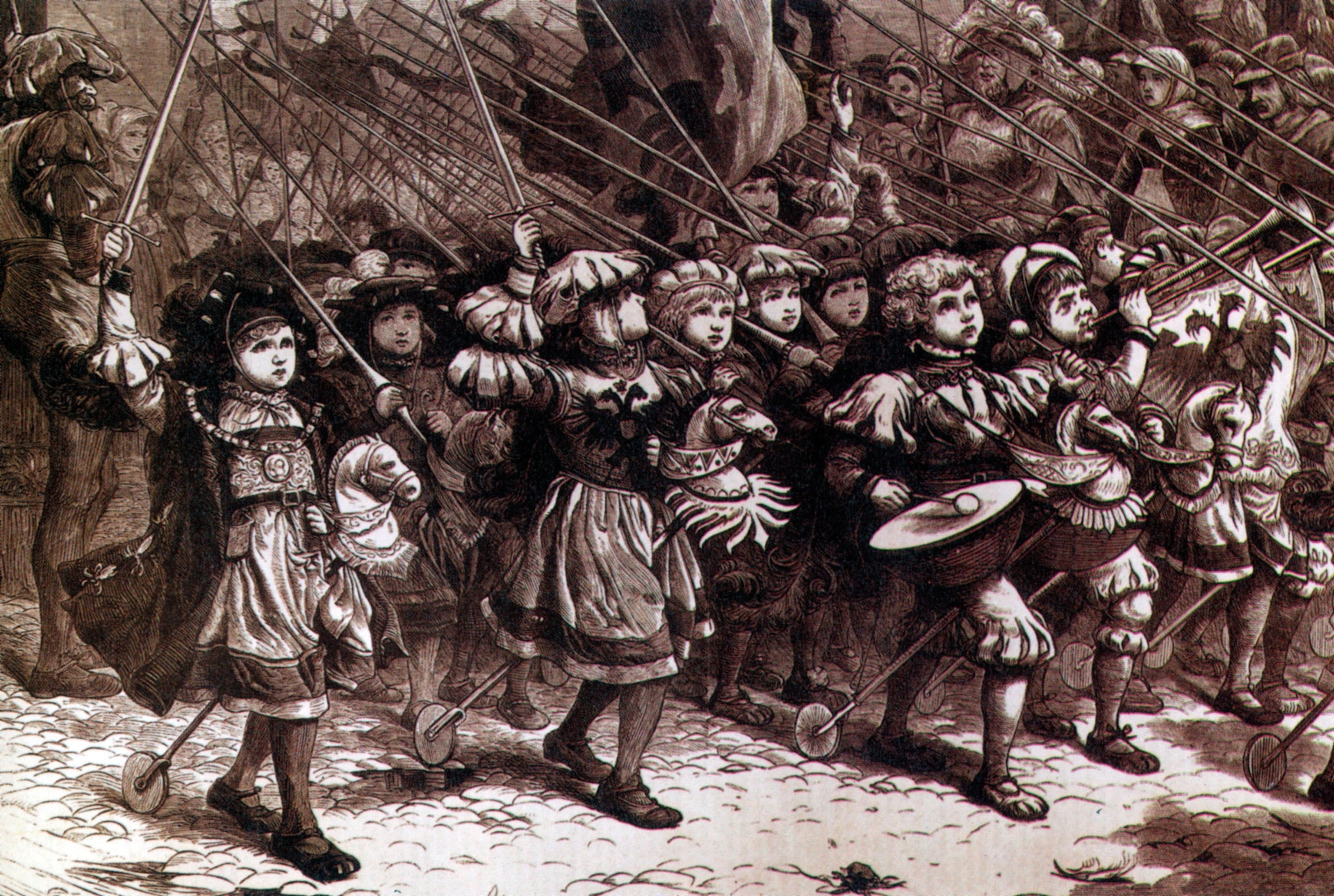
Accounts of the 1212 Children’s Crusade featured dramatic events, some that are now regarded as apocryphal. For centuries, romanticized retellings included these episodes, such as The Story of the Crusades, an English children’s book from 1910:
Suddenly, while Pope Innocent was vainly trying to rouse Europe to undertake a Sixth Crusade . . . boy leaders drilled their little regiments . . . and prepared seriously to go forth to the Holy War. At first they met with opposition, and ridicule; but such was the earnest zeal of these little people that even the most hardened onlooker ceased to jeer or hinder. Mothers, with aching hearts, saw their little ones march forth, and put out no hand to prevent them . . . From Germany a band of seven thousand children set out for the port of Genoa, from whence they hoped to embark for the Holy Land. They were led by a boynamed Nicholas, who swayed them by the most extraordinary power . . . But to get to Genoa, they had to cross the Alps, and there cold and hunger left thousands of the poor mites dead . . . The remnant . . . made its way at length into Genoa. There they hoped . . . to cross the sea; but the citizens of the port looked with scant favour upon the little Crusaders . . . Enthusiasm was long since dead, they were laughed at, as failures, and saddest of all, when they were asked why they had left their homes, they now made weary answer that “they could not tell.” Few indeed, ever saw their native land again.
Despite such fears of unrest arising from popular crusades, later chronicles also exalt the Children’s Crusade. The tale that many had been shipwrecked on San Pietro island near Sardinia later prompted Pope Gregory IX to sponsor a church there. For all the troublesome nature of the Children’s Crusade as it unfolded, the church soon held up the fervor of the pueri as an example to emulate.
As recruitment began in 1213 for a new crusade—the fifth, which eventually set out for the Holy Land in 1217—people were urged to follow the example of the children the year before, and offer their lives for Christ. Historians may never be fully able to separate truth from rumor and fact from fiction, but the Children’s Crusade provides valuable insight into the relationship between popular movements and the church.








